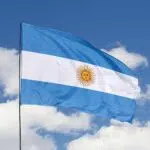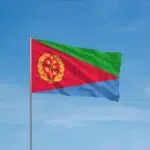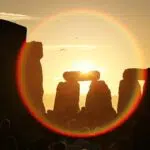June Solstice occurs between June 20 and 22 every year and this year, it falls on June 21. The day marks the time of year when the sun is directly positioned above the Tropic of Cancer in the Northern Hemisphere — the northernmost latitude it reaches all year long. This phenomenon creates the longest day north of the equator and the shortest day south. The effect is felt the greatest in areas that are farthest from the equator with daylight lasting more than 12 hours. On this day, the Arctic Circle experiences what is commonly known as ‘midnight sun’ or ‘polar day.’ On the other hand, the Antarctic region experiences ‘polar night’ when the sun doesn’t rise at all.
History of June Solstice
The observance of June Solstice dates back to the Stone Age. However, it wasn’t until ancient times that people observed noticeably longer days in the north and shorter days in the south. The Neolithic civilization saw the sun standing still in the sky as the summer progressed. When autumn came, they tracked down the sun’s direction going south. They immediately called it ‘solstice,’ from the Latin words ‘sol,’ meaning ‘sun’ and ‘stitium,’ meaning ‘still’ or ‘stopped.’In Ancient Egypt, June Solstice helped the Egyptian tribes predict the annual flooding, as this day corresponded to the rise of the Nile River. They used this day as a marker to schedule their planting and harvesting of crops.Different tribes and religions around the world also observed June Solstice in cultural and faith-based traditions. In Northern Europe, they refer to it as ‘midsummer,’ while other neo-pagan religions such as Wiccans refer to it as ‘litha.’ Christians and Catholics used this day to commemorate St. John’s Day in observance of John the Baptist’s birthday. On the other hand, Ancient Romans counted the days leading up to June Solstice for the celebration of Vestalia, a religious festival to honor Vesta, the goddess of the hearth.In modern times, June Solstice marks the one-month countdown to the Olympic games opening. This was based on the ancient Greek calendars, where Summer Solstice marked the beginning of the year.
June Solstice timeline
The Stone Age civilization observes June solstice through gatherings and picnics.
The Neolithic civilization observes the standstill of the sun, naming the phenomenon ‘Solstice.’
Ancient Egyptians predict flooding from the Nile River through June Solstice.
Different religions and tribes around the world adapt June Solstice to celebrate their individual cultural milestones.
June Solstice FAQs
What is the difference between the summer solstice and winter solstice?
Summer Solstice happens in the north where the nights are shorter, and Winter Solstice happens in the south where the nights are longer.
What happens in December Solstice?
December Solstice is the reversal of June Solstice, where the sun stops at the Tropic of Capricorn below the equator.
How do Scandinavians celebrate June Solstice?
Scandinavians celebrate June Solstice through festivities in which maypoles are erected, homes are decorated with garlands, and girls wear flowers in their hair.
How to Observe June Solstice
-
Light up a bonfire
If you are from the southern hemisphere, take advantage of the longer nights by lighting up a bonfire. Enjoy an evening of smores, stories, and a round of drinks with your group of friends.
-
Go out on a picnic
Longer days are a luxury in the northern hemisphere. Seize this day by enjoying the outdoors on a picnic. Pack your favorite snacks, grab a book, and bathe under the cozy, warm sun.
-
Play outdoor games
June Solstice is the perfect excuse for kids to play their favorite games outside. It’s a great way to take a break from burying their noses in gadgets, indoors, and experience fun, physical activities outdoors.
5 Interesting Facts About June Solstice
-
The Earth is farthest from the sun
Contrary to common beliefs, the Earth is farthest from the sun during June Solstice.
-
It’s not the hottest day on Earth
While the day lasts longer, the hottest season doesn’t come weeks or months after June Solstice.
-
June 22 solstice is rare
While the annual date range of June Solstice is between June 20 and June 22, the last June 22 Solstice was in 1975 and it won’t happen again until 2203.
-
The opposite happens in December Solstice
During the December Solstice, the northern hemisphere has a shorter day, and the southern hemisphere has a shorter night.
-
It happens at the exact same time
While differing in dates, June Solstice happens exactly at 09:13 UTC.
Why June Solstice is Important
-
We love the outdoors!
June Solstice gives us the opportunity to be outdoors longer. From kids playing around to adults running errands, the longer day makes us more productive.
-
We love night picnics
Night picnics are popular in the southern hemisphere during June Solstice. Longer nights mean longer conversations with friends and a longer time to rest before the next day.
-
It’s a fascinating phenomenon
It’s interesting to observe how the sun perfectly stops at the angle directly to the Tropic of Cancer and the effects it brings to the northern and southern hemispheres.
June Solstice dates
| Year | Date | Day |
|---|---|---|
| 2022 | June 21 | Tuesday |
| 2023 | June 21 | Wednesday |
| 2024 | June 20 | Thursday |
| 2025 | June 21 | Saturday |
| 2026 | June 21 | Sunday |



























